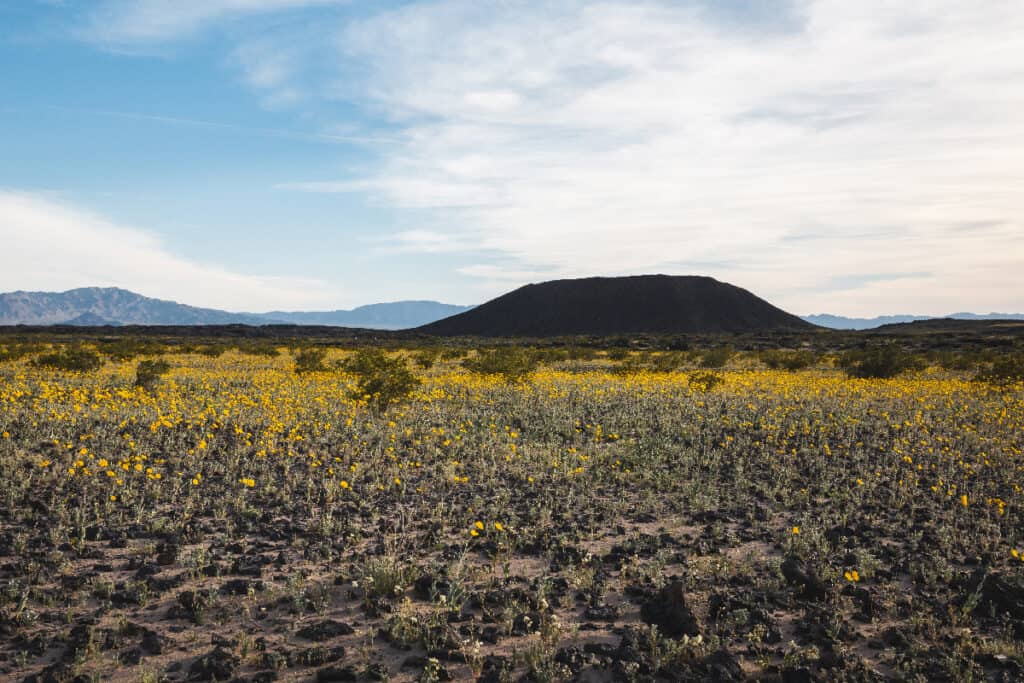The official California state reptile is the desert tortoise. With its unique adaptations in an unforgiving habitat, it provides a window into the extraordinary life found in the state’s vast deserts. From its prehistoric origins to its important ecological role today, this remarkable creature continues to captivate and fascinate us. Let’s take a closer look at the desert tortoise and discover why it’s illegal to even touch California’s state reptile!
The Official California State Reptile: The Desert Tortoise
The desert tortoise (Gopherus agassizii) became the official California state reptile in 1972. These incredible reptiles are a symbol of strength and resilience and were once abundant in California’s deserts. In fact, just 80 years ago, there were hundreds of desert tortoises per square mile roaming across the Mojave Desert. However, today their populations are plummeting at a dangerous rate. Now there are only two to three adult tortoises per square mile! Desert tortoises are a keystone species and have a large influence over their environment, so their decline is a big problem for the ecosystems in California.

The Decline of the Desert Tortoise
Over the past four decades, the population of desert tortoises has been decimated, dropping a staggering 90% since the 1980s! Vandalism, disease, predation, and collecting them as pets (which is now illegal) were some of the main causes of this drastic decline. California’s Endangered Species Act of 1970 was created to help protect desert tortoises in the state, as well as other animal and plant species. Three years later, the U.S. Endangered Species Act was passed to further protect vulnerable species like the desert tortoise. Today, it is illegal to even touch a desert tortoise in California!
Although they are protected by state and federal laws, desert tortoises still face threats like habitat loss caused by mining operations, off-road vehicles, livestock grazing, and human development. This has put California’s state reptiles in grave danger of becoming extinct. A 2018 study revealed a startling statistic: between 2004 and 2014, the estimated number of adult tortoises within their historic range fell from 336,393 to 124,050.
In addition to surviving in their harsh environments, desert tortoises also are in danger of being run over by vehicles, urban and military expansion encroaching on their territory, illegal marijuana farms, wildfires, predators (especially ravens), drought, and massive solar farm development. As you can see, everyday life — as well as the overall survival of their species — is far from easy.
Where Do Desert Tortoises Live?
The desert tortoise is the largest reptile living in the southwestern United States. These remarkable animals grow up to 15 inches in length with high-domed shells. Desert tortoises evolved millions of years ago in a climate that was cooler, wetter, and filled with trees, lakes, and marshes. Today, however, their ancestral range has completely transformed into a dry and hostile environment, which we now call the Mojave Desert in California, Arizona, Utah, and Nevada.
The Mojave Desert has blazing hot summers and bitterly cold winters. This is a tough life for these tortoises, especially when they didn’t originally evolve for such extremes. However, desert tortoises have adapted to this hostile environment. They spend at least 95% of their time underground, where they are protected from intense temperatures.

Desert tortoises have shovel-like front limbs and strong claws that they use to dig long burrows in sandy soil.
©SLSK Photography/Shutterstock.com
Desert tortoises are incredible diggers. They have shovel-like front limbs and strong claws that they use to dig long burrows in sandy soil. They can create underground tunnels ranging from 3 to 30 feet long, which they use as temporary shelters and long-term dens with multiple chambers. During the desert’s fierce summers and freezing winters, desert tortoises use their dens to brumate (a reptilian process similar to hibernation) and to estivate (similar to brumating, but during the summer). Several tortoises may share a den together during these periods of extreme temperatures.
Although they are not the speediest of creatures, desert tortoises still manage to move forward steadily. They can cover impressive distances, even up to 20 feet per minute! These desert-dwelling reptiles are herbivores. They eat wildflowers, grasses, some shrubs, herbs, and the new growth, flowers, and fruit of cacti. They also ingest soil and rocks, likely to help with digestion.
How Do Desert Tortoises Find Water in the Desert?
Much of the water desert tortoises consume comes from the plants they eat. They also drink from the intermittent pools that form when it rains. An adult desert tortoise is incredibly resilient and can survive for a year or more with no access to water! They rely solely on the moisture they get from their food and the occasional rainfall in their desert habitat. Desert tortoises can store over 40% of their own body weight in water in their large urinary bladders.
Unfortunately, one of their main defense mechanisms can also be detrimental to their water storage. When a desert tortoise feels threatened, it will empty its bladder — which is where it stores all that lifesaving water! This is one of the reasons that trying to chase, capture, touch, pick up, or handle a desert tortoise in any way is illegal. Doing so deprives them of their vital water storage, making them especially vulnerable in the scorching desert.

Desert tortoises eat wildflowers, grasses, shrubs, herbs, flowers, and fruit of cacti in the Mojave desert.
©iStock.com/Attila Adam
Threats to California’s State Reptile
Desert tortoises continue to face many different threats today. They struggle with habitat loss, detrimental encounters with humans and human development, predators, and extreme weather conditions.
Another challenge is the solar farms that are popping up all across California, particularly in the Mojave Desert — which is where the largest population of desert tortoises live. Developers have to pay a lot of money to protect these animals. This allows scientists and consultants to help capture and move the tortoises. However, funding does not always come through. There are not enough resources and people to help relocate and establish the tortoises in a new and safer area.
Another issue facing desert tortoises is that they do not have a quick reproduction rate. In the wild, desert tortoises usually live around 35 to 40 years. Female tortoises do not breed until they are 15 to 20 years old. In addition, they will only lay eggs if there is enough food for them to eat. In addition, very few of their babies survive — only 2% to 3% of baby hatchlings make it to adulthood! Young desert tortoises have delicate, thin shells. This makes them vulnerable to many natural predators like coyotes, foxes, Gila monsters, badgers, roadrunner, fire ants, and ravens.
Ravens are the number one natural predator of desert tortoises today, although this was not always the case. In fact, there were very few ravens living in California’s deserts originally. However, when humans began to develop these areas — leaving behind roadkill and garbage in their wake — the ravens also moved in. Tortoises can hide underground, but ravens are very intelligent animals and can outsmart these vulnerable reptiles.
Protecting California’s State Reptile

The Desert Tortoise has survived for thousands of year, but now they are in serious danger of extinction.
©Mr. SUTTIPON YAKHAM/Shutterstock.com
With so many challenges facing them, desert tortoises could completely disappear from their home in the desert, where they have been living for thousands of years. However, there are many people and organizations trying to help and make sure that we do not lose these amazing animals forever.
For example, in 1986, U.S. Senator Alan Cranston proposed the California Desert Protection Act, a bill that could help protect California’s natural deserts and hopefully prevent the extinction of the desert tortoise. Unfortunately, there was a lot of opposition to his proposal, particularly since the bill would limit hunting and grazing. However, Senator Cranston was determined and continued presenting his idea all the way up to 1992. He retired in 1993, but the bill was picked up by Senator Dianne Feinstein. Finally, after more than 50 amendments and revisions, the bill became law in 1994.
The California Desert Protection Act of 1994 created three special areas in the Mojave Desert to protect its wildlife, habitats, and resources: Mojave National Preserve, Joshua Tree National Park, and Death Valley National Park. This would help to preserve millions of acres of fragile desert habitats for the desert tortoise as well as for other plants and animals. In addition, the Desert Tortoise Research Natural Area (DTRNA) in the western Mojave Desert was also created to help protect the desert tortoise. It is a 39.5 square mile area specifically set aside as a safe haven for California’s state reptile. The DTRNA is only a two-hour drive from Los Angeles and Bakersfield, with a special Interpretive Center and many trails to explore. Your best chance of seeing a desert tortoise is in the morning or evening when it is not as hot or right after its rains.
The photo featured at the top of this post is © Tigerhawkvok / Creative Commons – License / Original
FAQs (Frequently Asked Questions)
What is California’s state reptile?
California’s official state reptile is the Desert tortoise (Gopherus agassizii). This is different from California’s official state marine reptile, the Pacific leatherback sea turtle (Dermochelys coriacea).
Can you keep a desert tortoise as a pet?
It is illegal to touch a desert tortoise or to take one from the wild. However, you can have a desert tortoise as a pet, as long as it came from a legal source — but there are laws and guidelines for keeping them in captivity, so be sure to do your research first.
What should you do if you see a desert tortoise?
If you spot a wild desert tortoise, remember — hands off! However, if it’s on a road with lots of traffic, help it out by gently guiding it off the road to safety.
If the tortoise is in imminent danger, you may gently and carefully move it to a safer place. Approach it slowly and carefully from the front (don’t come up behind the tortoise, that will scare it!), and gently pick it up. Hold the tortoise close to the ground as you move it, and take it away from the danger in the direction it was already traveling. If there is a bush nearby, place the tortoise there.
If you find an injured tortoise or one that is trapped, contact the California Department of Fish and Wildlife or the Bureau of Land Management (BLM) Wildlife biologist at 760-384-5400.
If you see a desert tortoise outside of its usual habitat, there is a good chance that it is a stray pet. Do your best to make sure it stays out of harm’s way, and try to locate its owners in your area. You can also get in touch with the California Turtle & Tortoise Club.
How can you help desert tortoises?
Keeping your trash contained is one of the simplest, yet most effective ways to help the desert tortoise. If we keep all of our garbage securely stored away, ravens will stay away. This means the unhealthy balance between ravens and tortoises in the Mojave Desert can be restored more quickly.
Thank you for reading! Have some feedback for us? Contact the AZ Animals editorial team.







